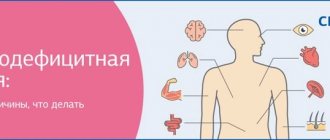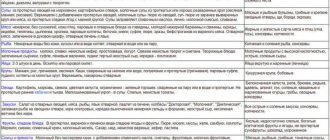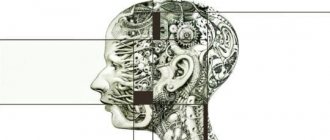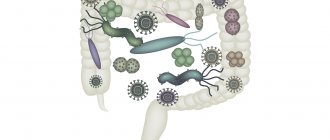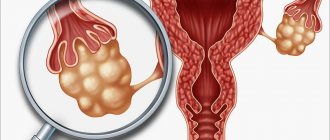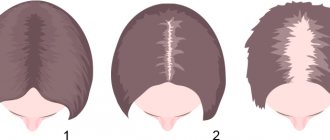What it is?
Anorexia is a disease characterized by a psychopathological disorder (obsessive mental states about supposedly excessive body weight and fear of gaining weight), partial or complete refusal to eat or decreased appetite. Anorexia leads to severe exhaustion of the body, metabolic disorders, and atrophy of the digestive system. When neglected, it provokes “starvation” death or suicidal behavior.
The disorder tends to be more common in teenage girls and young women, but it can affect boys and young men, children approaching puberty, and older women (up to and including menopause). The disorder is associated with a specific psychopathological fear of obesity and sagging figure, which becomes an annoying idea, and patients set a low body weight limit for themselves. As a rule, various secondary endocrine and metabolic disorders and functional disorders occur. Symptoms include dietary restrictions, excessive exercise, emetics, laxatives, diuretics, and appetite suppressants.
Currently, there is a visible trend towards an increase in cases of anorexia nervosa: in recent years, the number of patients has almost doubled. The risk group for this disease is most often teenage girls who do not suffer from anorexia in its pure form, but, having optimal healthy weight and height parameters, strive to lose weight and express ideas of dissatisfaction with their appearance.
Organization of treatment
How is the treatment carried out?
Restoring power
- We restore the volume of food to the standard: such a volume of food that will provide the basic and main volume
- We restore the balance of proteins, fats, carbohydrates, vitamins, minerals
- Restoring dietary diversity (gradually)
- Restoring impaired feelings of satiety and hunger
- We restore energy intake only through food, without replacement nutrition
We restore weight
Rapid weight gain is dangerous to health, and it is also dangerous to suddenly gain weight solely due to a very large amount of food (the body is not ready to digest such an amount on the fly).
Treatment of this condition is usually divided into two stages: nonspecific or emergency (2-3 weeks) and specific - long-term.
After discharge from the hospital, long-term outpatient treatment is necessary. In most patients, after 5–7 months, the first relapse of anorexia occurs, so they require re-hospitalization.
Treatment of such patients is long-term (takes months, sometimes even years) and requires the use of both psychiatric and nutritional therapy methods; many experts believe that along with psychiatrists, nutritionists should also be involved in the treatment process.
- Emergency assistance comes down to correcting the water and electrolyte balance. During the first stage of treatment, the main task is to combat cachexia, for which special dietary regimens are used, including, if necessary, artificial (parenteral and enteral) nutrition, vitamins and psychotropic drugs.
- At the second, longer stage, therapeutic measures are carried out aimed at eliminating the symptoms of the underlying mental illness that caused disturbances in nutritional status; it is necessary to convince the patient of the need for treatment, since they often underestimate the danger of the condition. Almost always, when weight loss is still insignificant, hospitalization in a specialized clinic is indicated. At the early stage of treatment, fluid retention is possible, so in the first 7–10 days it is necessary to take into account fluid intake, and the caloric content of the diet at this time should not exceed 2000 kcal. Fractional meals 6–7 times a day are prescribed in small portions under the supervision of staff. The patient is weighed daily, the mass of nutrients and feces taken is recorded, fluid intake and excretion are measured, and water and electrolyte balance is examined. Particular attention at all stages should be paid to a balanced diet through the use of enteral nutritional mixtures, which include a full set of nutritional components (proteins, fats, carbohydrates, macro- and microelements, vitamins), as well as modular mixtures. Tube feeding for anorexia nervosa is rarely used. The use of parenteral nutrition in such patients is difficult.
Nutricomp from meet all of the above requirements .
Among them:
1) standard mixtures:
- Nutricomp Standard liquid®
- Nutricomp Energy Fiber liquid®
- Nutricomp Fiber Liquid®
- Nutricomp Energy liquid®
2) specialized mixtures:
- Nutricomp Immune Liquid®
- Nutricomp Peptide Liquid®
- Nutricomp Intensive Liquid®
Each of them has its own specifics, their appointment is carried out according to indications, at the discretion of the specialist.
1) Nutricomp Standard liquid®
Key Features
- Energy value: 1 ml = 1 kcal
- May be the only source of nutrition that provides the daily requirement for proteins, energy, vitamins and minerals
- The combination of milk and soy proteins provides the most complete protein composition
- The fat component is a balanced combination of soybean oil, MCT and fish oil
- Carbohydrates are represented by maltodextrin with a high content of polysaccharides
- Distribution of energy value (% kcal): proteins: fats: carbohydrates: dietary fiber = 15: 30: 55: 0
- Gluten, lactose and cholesterol free, very low in purine
2) Nutricomp Energy Fiber liquid®
Content:
- What causes the disorder and what does it lead to?
- Neurotic form of anorexia
- Predisposing factors for the development of anorectic syndrome
- Diagnostics
- Manifestations, complaints and mental disorders characteristic of anorexia
- Stages of the disease
- Treatment of anorexia in a hospital
In some diseases, a person stops eating for a long time. This deviation is called anorexia. Patients develop progressive exhaustion, leading to serious health problems and even death. It is very important to promptly identify pathology, establish and eliminate its causes. To help patients, the participation of an experienced doctor and inpatient treatment for anorexia is required.
Key Features
- Energy value: 1 ml = 1.56 kcal
- The protein contained in the mixture in increased quantities is easily digestible thanks to the most balanced combination of milk and soy proteins
- Carbohydrates are represented by maltodextrin with a high content of polysaccharides
- The fat component is a combination of MCT, rapeseed oil and fish oil
- 2.0% dietary fiber (2 g / 100 ml)
- The high content of omega-3 fatty acids EPA+DHA has a positive effect on the course of inflammatory processes and supports immune and cardiac function, and also helps normalize blood triglyceride levels and blood pressure
- Gluten free, low cholesterol, very low lactose and purine
- Distribution of energy value (% kcal): proteins: fats: carbohydrates: dietary fiber = 20: 29: 48: 3
How dangerous is anorexia nervosa?
Anorexia has one of the highest suicide risks of any mental disorder. The thought that you are not in the body you would like to be in is very painful. There is so much suffering associated with it that a person sometimes prefers to get rid of it.
Anorexia nervosa leads to physical impairment. An anorexic person can die from cardiovascular disease due to exhaustion and weakened immunity.
The famous Minnesota hunger experiment was conducted to illustrate the effects of anorexia. You can read about it in detail in the article The Hunger Experiment That Changed the World . Thirty-six male volunteers were selected and subjected to dietary restrictions. They ate 3500 calories, everyone was mentally and physically healthy, and over the course of six months their caloric intake was reduced to 1500 calories. The following changes occurred - metabolism slowed down, blood volume decreased, changes occurred in the psyche: a pathological fixation on food developed, irritability appeared. Some left the experiment, unable to withstand the stress. The range of interests of the rest narrowed to talking about food, cooking, one even wrote a cookbook.
After 6 months of fasting, 3 months of recovery followed. To regain their previous weight, they had to consume more than the 3,500 calories they initially ate. An insatiable hunger is described. The experiment did not involve people with anorexia nervosa, but even it shows how dietary restriction affects a healthy person.
Key Features
- Energy value: 1 ml = 1 kcal
- The most complete protein composition is represented by a combination of milk and soy proteins
- Carbohydrates are represented by maltodextrin with a high content of polysaccharides
- The combination of soybean oil, rapeseed oil, MCT and fish oil provides the optimal ratio of PUFAs
- 1.5% dietary fiber (1.5 g / 100 ml)
- Gluten, lactose and cholesterol free, very low in purine
- Distribution of energy value (% kcal): proteins: fats: carbohydrates: dietary fiber = 15: 29: 53: 3
4) Nutricomp Energy liquid®
Risk factors
In addition to the supposed theories of the origin of the disease, scientists are also considering various risk factors. These conditions increase the risk of anorexia, but do not independently determine the formation of the disorder. The discovery of many forms of predisposition to the disease helped psychologists develop the prevention of eating disorders in adolescents.
Key risk factors:
- Low self-esteem, causing psychological discomfort.
- Dysfunctional family. Strictness, lack of a warm relationship with the father, formalization of education by parents can affect the development of anorexia;
- Negative experiences of interaction with peers, primarily formed in schools and other educational institutions. A girl may become depressed because of ridicule about her excess weight or other aspects of her appearance;
- Complicated family history. Having close relatives suffering from mental illness increases an individual's risk of developing the disease;
- Age. Anorexia most often occurs in women aged 15 to 35 years.
Doctors believe that hereditary factors in anorexia do not play as important a role as the psychological state. It is reliably known that the disease is not transmitted directly to children from parents.
Key Features
- Energy value: 1 ml = 1.5 kcal
- The protein contained in the mixture in increased quantities is easily digestible thanks to the most balanced combination of milk and soy proteins
- Carbohydrates in the form of quickly digestible polysaccharides (maltodextrin)
- The fat component is a combination of MCT, rapeseed oil and fish oil
- The high content of omega-3 fatty acids EPA+DHA has a positive effect on the course of inflammatory processes and supports immune and cardiac function, and also helps normalize blood triglyceride levels and blood pressure
- Does not contain gluten, cholesterol. Very low lactose and purine content
- Distribution of energy value (% kcal): proteins : fats : carbohydrates : dietary fiber = 20 : 30 : 50 : 0
Specialized mixtures:
1) Nutricomp Immune Liquid®
Treatment of anorexia
Anorexia nervosa has a gradation of degrees of severity of the disease. Very low BMI requires hospitalization. This is done in order to save a person's life. In this case, the cardiovascular system may fail at any time.
The family approach of the Maudsley Clinic (UK) is very effective in treating adolescents under 18 years of age who have suffered from anorexia for a long time. It allows you not to put a person in a clinic, but to restore his weight.
For adults there is also a certain scheme according to which, for example, our Center works. The first stage is the restoration of nutrition, something without which it is impossible to cure anorexia nervosa. We offer the “Down with Diets!” Program , where an individual nutrition plan is created. The work is going on very delicately, the diet is gradually expanding, forbidden foods are gradually returning, because a person with anorexia nervosa has a lot of restrictions not only on the amount of food, but also on the composition and time of intake. The program helps reduce anxiety and systematically work to ensure that eating behavior - satiety and nutrient intake - is normalized.
However, in addition to dietary adjustments, a program aimed at emotional regulation is needed. This is where dialectical behavioral therapy comes into play, which most effectively helps you learn to regulate your emotional state. Our Center also has several DBT groups .
Let's move on to your questions!
Key Features
- Energy value of 1 ml = 1.36 kcal
- High protein content provided by a combination of milk protein and glutamine-rich wheat protein hydrolysate
- Glutamine (1.97 g/100 ml) helps maintain the immune function of the intestines and the body as a whole
- The formula is enriched with antioxidants (Vitamins A, C, E, group B, selenium, zinc, copper)
- Contains a unique lipid combination of MCT, LCT and fish oil, providing an optimal ratio of PUFAs, which has a pharmacological effect on the system of pro- and anti-inflammatory mediators
- Carbohydrates are represented by maltodextrin with a high content of polysaccharides
- Contains 1.4% dietary fiber (1.4 g/100 ml)
- Does not contain cholesterol. Content of purine 3.0 mg per 100 ml, gluten 30 mg per 100 ml, lactose 14 mg per 100 ml
- Distribution of energy value (% kcal): proteins: fats: carbohydrates: dietary fiber = 20: 24: 54: 2
2) Nutricomp Peptide Liquid®
Specialized liquid mixture for patients with impaired digestion and absorption
A specialized fully balanced, isocaloric, semi-elemental liquid mixture based on peptides and medium chain triglycerides for patients with impaired digestion and absorption.
Signs of anorexia
What is different about a person with anorexia nervosa? It has some special features. A potential anorexic is born with a more vulnerable nervous system, increased sensitivity and constantly depressed mood and irritability.
How is the behavior mechanism of a person with anorexia nervosa fixed? When he first goes on a diet and loses weight, he then experiences double reinforcement, as therapists say. Firstly, he feels that against the background of fasting he feels calmer, the constant dysphoric background decreases. Secondly, he hears reinforcement from others and feels proud. Therefore, in specialized forums, willpower is a special topic for discussion and a source of pride for an anorexic.
There is another criterion, but today it is excluded from the classifier. This is amenorrhea - absence of menstruation. Sometimes, despite all the symptoms of anorexia, menstruation persists. But we always ask whether the cycle is maintained, because this is an indicator of women's health.
Key Features
- Energy value 1 ml = 1 kcal
- High biological value protein from various sources such as whey protein and hydrolyzed soy protein
- Oligopeptides as a protein component
- High proportion of MCTs (51%) improves fat absorption
- High degree of hydrolysis facilitates protein absorption
- Reduced fat content reduces stress on the liver and pancreas
- Distribution of energy value (% kcal): proteins: fats: carbohydrates: dietary fiber = 14: 12: 74: 0
3) Nutricomp Intensive Liquid®
Specialized liquid mixture for patients with respiratory failure and post-traumatic metabolic disorders
A specialized hypercaloric, ready-to-use, low-carb liquid formula enriched with MCTs. Metabolically adapted formula for patients with respiratory failure and post-traumatic metabolic disorders.
Clinical picture
At first, people with anorexia do not seem like that, because today most women diet and care about their own weight. Is it possible to suspect a model who strives to achieve ideal body parameters using all kinds of methods of an eating and mental disorder? After all, this is her profession, and she must look good and take care of her own body. But over time, when a person can no longer stop and continues to lose weight, it is impossible not to notice.
The very first signs of anorexia:
- BMI falls below the normal value of 18.5;
- refusal to eat;
- weight and figure become an obsession (in the nervous form of the disease).
It is impossible to say exactly at what weight anorexia begins, because this is too individual a parameter, which also depends on height. For example, 44 kg for a height of 154 cm is still the norm, but the same body weight for a height of 180 cm is already a pathology. Therefore, first of all, BMI is calculated and compared with normal values. If it falls below the bottom bar, it’s time to sound the alarm.
Determination of body mass index: I (BMI designation) = m (body weight in kg) / h2 (height in meters).
Common symptoms for all forms:
- discomfort after eating;
- muscle weakness and cramps;
- low body weight, which only decreases over time;
- limiting food intake under any pretext;
- refusal to get better;
- constant feeling of cold and chills due to poor circulation;
- fear of food;
- depressed, depressed state;
- phobia of excess weight.
This is just the beginning. Over time, the patient’s condition worsens more and more, and this is noticeable in his appearance, health and broken psyche.
Mental condition
These symptoms are characteristic primarily of anorexia nervosa:
- apathy;
- insomnia at night and drowsiness during the day;
- fast fatiguability;
- depression;
- looking at your naked (or in underwear) body in the mirror for a long time;
- daily weigh-ins;
- unhealthy fascination with topics related to weight;
- incorrect goal setting: “I want to lose weight from 45 kg to 30 kg” (and this is with a height of 180 cm);
- mood instability;
- refusal to share meals (for example, teenagers do not go to the school canteen and, under any pretext, do not attend family meals);
- lack of appetite;
- complete eating disorder: they eat either only standing, or only crushed, pureed foods, or only cold, or only raw, and other oddities;
- irritability, aggressiveness, constant feeling of resentment towards others;
- decreased libido;
- social isolation, cessation of communication.
Appearance
- Alopecia;
- pale or yellowish skin;
- bleeding gums, caries, tooth loss and destruction;
- weight loss, muscle dystrophy, unhealthy thinness;
- splitting and brittleness of nails.
Health
- Algodismenorrhea;
- anemia;
- gastritis;
- dizziness;
- delayed physical development in adolescence and childhood: growth stops, girls’ breasts do not enlarge and menstruation does not occur, boys’ genitals do not develop;
- leukopenia, leukocytosis;
- hormonal imbalance;
- fainting;
- cessation of menstruation in women;
- gallbladder problems;
- indigestion;
- spontaneous gag reflex after eating;
- failure of the liver and kidneys;
- cardiac arrhythmia;
- thrombocytosis;
- endocrine disorders: amenorrhea in women, impotence in men, increased cortisol levels, insufficient production of thyroid hormone, problems with insulin secretion;
- enterocolitis.
Unlike other diseases, anorexia is insidious in that the patient himself, for mental reasons, is not aware of the disease and does not see even its most striking symptoms. His consciousness is so permeated with obsessive ideas that even among the bones covered with skin (this picture is observed in the last stages), he manages to see folds of fat.
Through the pages of history. In Soviet psychiatry, anorexia, in its clinical manifestations and treatment methods, was practically equal to another mental illness - schizophrenia. Nowadays medicine has moved away from such an understanding of the syndrome, but they have not stopped comparing these two conditions. Recently, cases of schizophrenia developing against the background of anorexia have become more frequent (a person is delusional with obsessive ideas about his body and the excess weight from which he allegedly suffers).
Key Features
- Energy value: 1 ml = 1.3 kcal
- The high biological value of the protein is due to the combination of milk (casein) and soy proteins
- Carbohydrates are represented by a fast and easily accessible source of energy, maltodextrin with a high content of polysaccharides
- The fat component is a combination of MCT and soybean oil
- Low, physiological osmolarity ensures better tolerability of the formula
- Distribution of energy value (% kcal): proteins : fats : carbohydrates : dietary fiber = 20 : 40 : 40 : 0
Diagnostics
Treatment of anorexia in a hospital is preceded by a diagnostic process. At the clinic, the doctor conducts an initial consultation with clients, accompanied by an examination and survey.
The examination makes it possible to identify in patients:
- Body weight is below acceptable limits. Weight deficiency of more than 15-20% of the norm corresponding to height and age.
- Visible deficiency of fat and muscle tissue.
- Delayed puberty in girls and boys. Short stature, underdevelopment of secondary sexual characteristics, irregular periods in women, endocrine problems.




